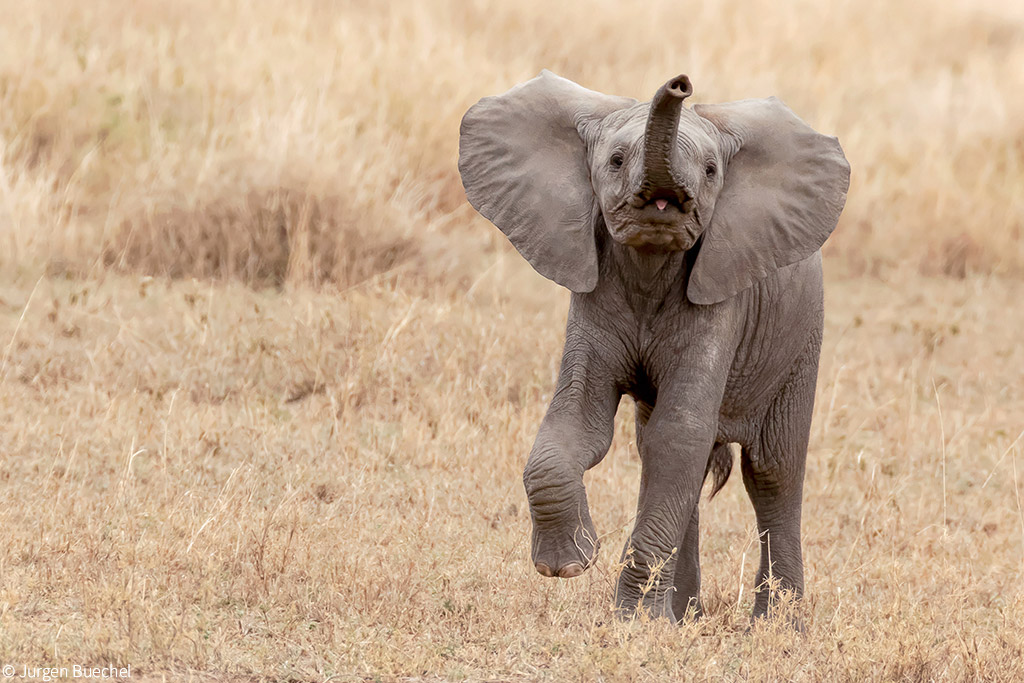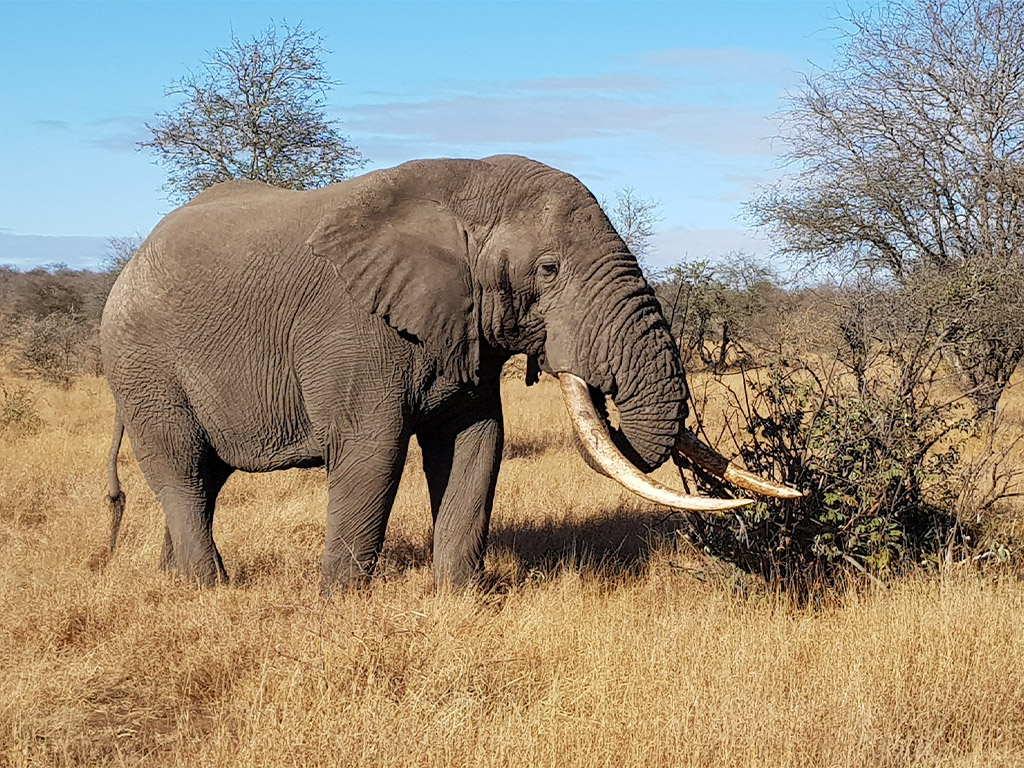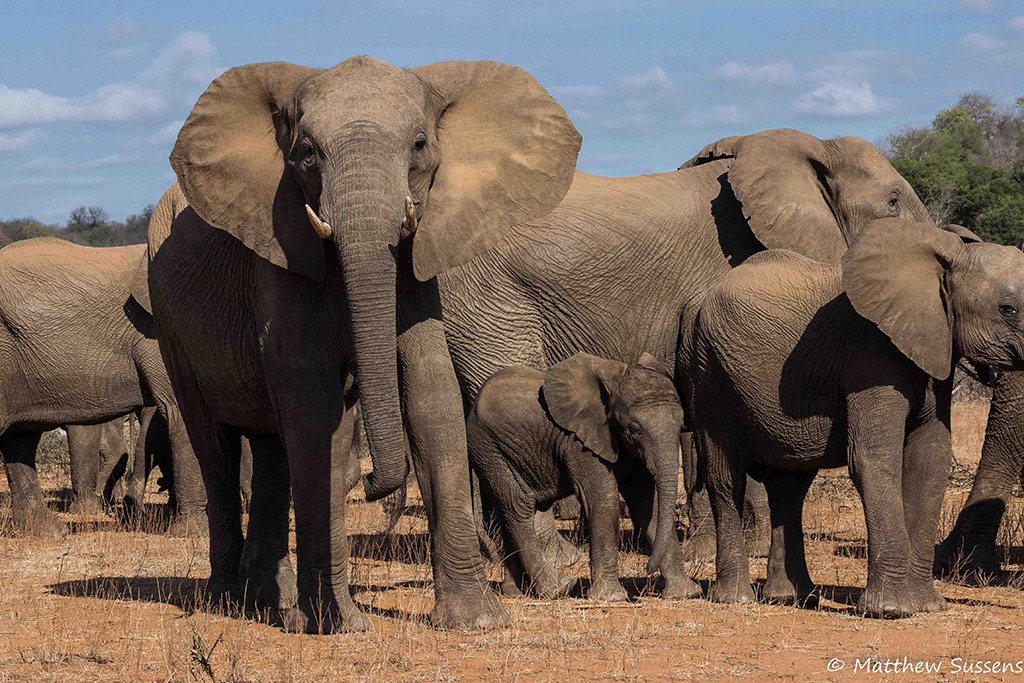
Animals communicate in a variety of ways but the most obvious of these, to humans at least, is their body language. Anyone can learn to read the body language of animals to differing degrees – we spend our lives figuring out the complexities of human communication and animals are far less equivocal than human beings. With their complex social structure and high intelligence, not to mention their potential danger to humans, elephants are an excellent place to start. A little practice and some observational skills are all that’s needed to understand the basics. In turn, this understanding can add immeasurably to the enjoyment of an elephant sighting or ensure comfort for elephants and those viewing them.
Where to start
Are you looking at a breeding herd or a male or a group of males? This is important because different things can motivate bulls and cows. The older females of a breeding herd are the ones that will dictate what the herd does and how they respond to something, and their sole objective is to ensure the safety of their herd. The younger elephants can be playful, insecure or looking to establish their boundaries, so their signals are often misleading, meaning that it’s always a good idea to gauge the mood of the larger females first. The intentions of males can be harder to read or understand. The younger males that have left the security of their herds at puberty are often quite nervous, and this either translates into either moving away or attempting to intimidate a potential threat. Older males are the undisputed kings of all that they survey and should be treated as such – don’t block their routes or antagonise them, and most will behave like perfect gentlemen.

Tails
Believe it or not, the tail is the real key to reading elephant body language. Elephants are intelligent and often display what’s known as displacement behaviour – they sometimes pretend to feed, for example, while they figure out their next move in an uncomfortable situation. Their tail, however, gives them away. The tail of a relaxed elephant swings from side to side; the tail of an alert or uncomfortable elephant is held still, pointing downwards; and the tail of an upset, frightened or angry elephant is held out stiffly at right angles from the body.
Ears
An elephant that is flapping its ears isn’t angry, it’s hot and trying to cool down. They use wind cooling over the surface of their ears to lower the temperature of the blood and ultimately, their core body temperature. If an elephant is unsettled by something, they will raise their heads and spread their ears in an attempt to show off how large they are (this is mostly unnecessary, as anyone who has been close to an elephant will tell you). A headshake often accompanies this.
This is often something that older cows do close to vehicles and is their way of telling you not to try anything silly. You, in turn, can communicate your good intentions by staying still and quiet. If this movement from a female is accompanied by a few short running steps in your direction, it’s time for you to move off if you can – again calmly and as slowly as possible.

Trunks
This complicated body part so unique to elephants often displays the nuances of elephant body language. An elephant uses its trunk for everything from eating and drinking to smelling and touching so it is continuously moving and interpreting its meaning can be quite complicated. A good general approach is that if the movement is focused – feeding, for example, then the elephant is relaxed. If the elephant is standing still with the trunk raised and curled with the tip pointing in a specific direction, the elephant has picked up on a particular scent and is working out what it is and what direction it is coming from. If the elephant is standing still with the trunk down and the tip twisting from side to side, this can mean that something has caught the elephant’s attention and it is deciding what to do next. A twisting trunk can be a sign of anxiety.
Bull elephants, particularly those in musth (see below), sometimes drape their trunks over their tusks. This is almost always an attempt at intimidation and should be interpreted as such – those new to elephant behaviour should take this as a sign to move out of the male’s way.
Feet and general body language
Elephants use their feet constantly to dig up roots or kick up dirt or dust, so an elephant kicking the ground repeatedly is no cause for concern. Elephants are constantly moving so any stillness (unless they are resting with sleeping youngsters) is a sign that something is amiss or that they are listening intently – either to other elephants or something else. Rocking from side to side can also be a sign of indecision or anxiety.


Musth
Musth bulls are deserving of their own section based on the fact that they can be more unpredictable and occasionally more aggressive while in this state. All mature bulls experience musth cycles where their testosterone levels skyrocket to around 60 times the normal levels. They secrete liquid from their temporal glands (see below) and that, combined with a constant urine drip that coats their legs, gives them a distinctive musky odour. Musth bulls hold their heads high with the ears above the level of the shoulders and walk with a self-assured swagger.
Temporal glands
Elephants have glands between their eyes and ears (the temporal region) that secrete an oily substance containing hormones and other substances. Often these secretions go into overdrive when the elephant is nervous, stressed or excited, although interpreting the reasons behind this can often be quite tricky.
Final word and disclaimer
Elephants are complex creatures, and it is impossible to apply any rules with absolute certainty. Discretion is always the better part of valour where elephants are concerned, and they should never be taken for granted – if you are uncomfortable with a situation, move away slowly and calmly. This guide is intended to assist beginners in reading an elephant, rather than encourage a sense of overconfidence. All wild animals should be treated with respect and elephants are no exception.


To comment on this story: Login (or sign up) to our app here - it's a troll-free safe place 🙂.![]()






